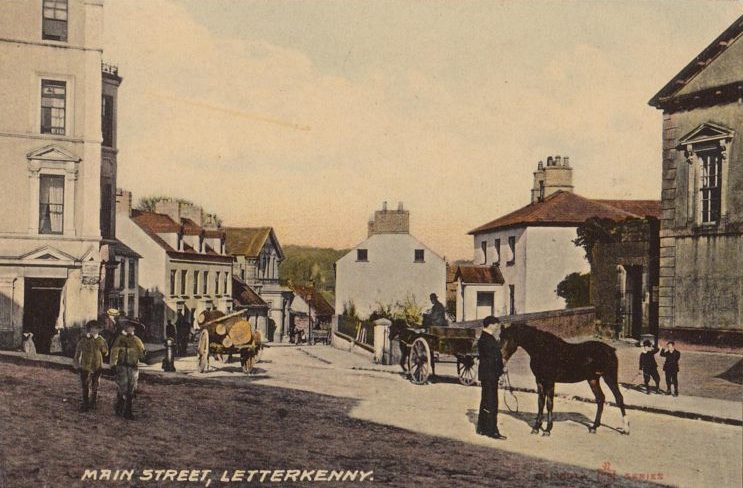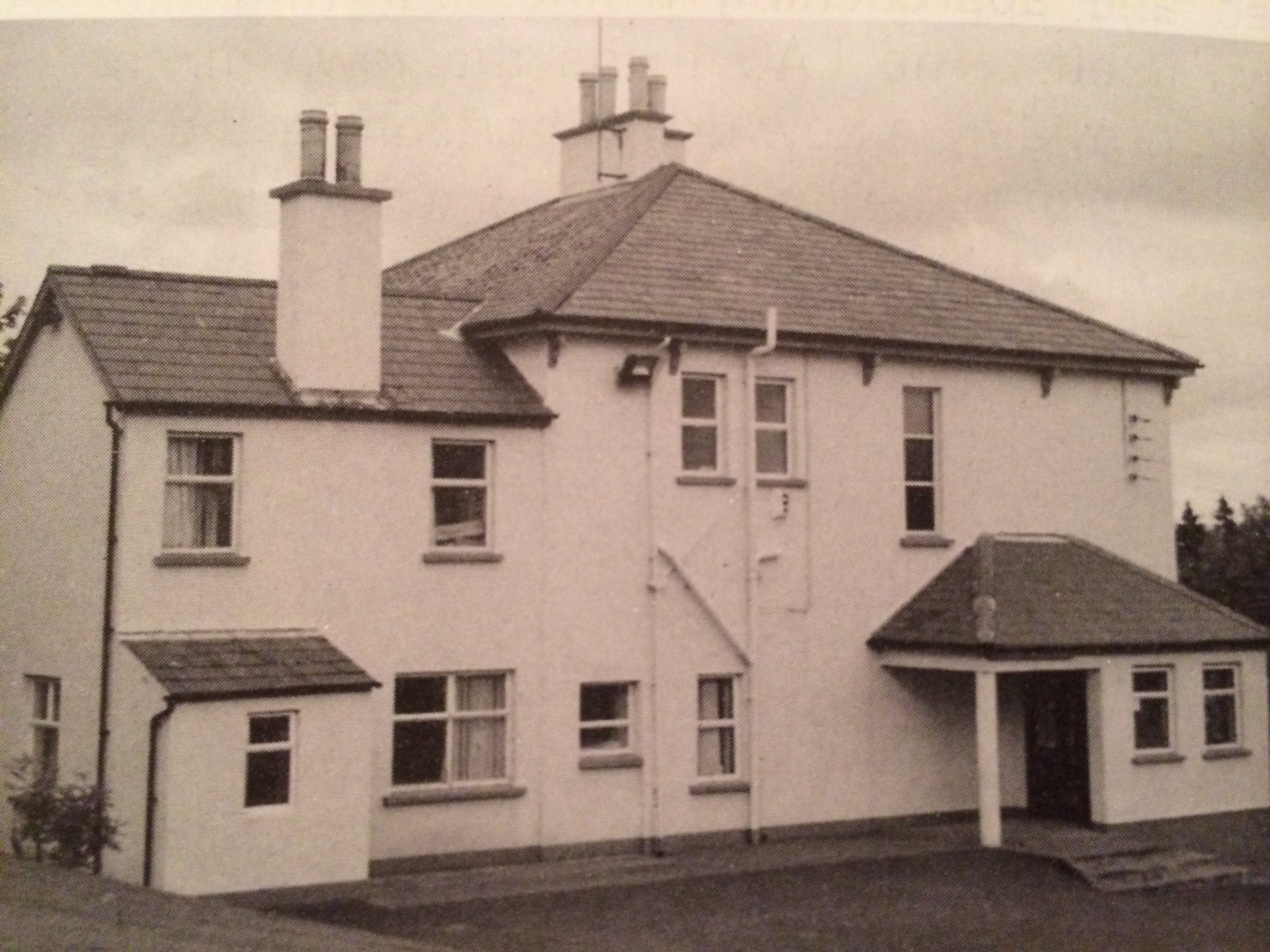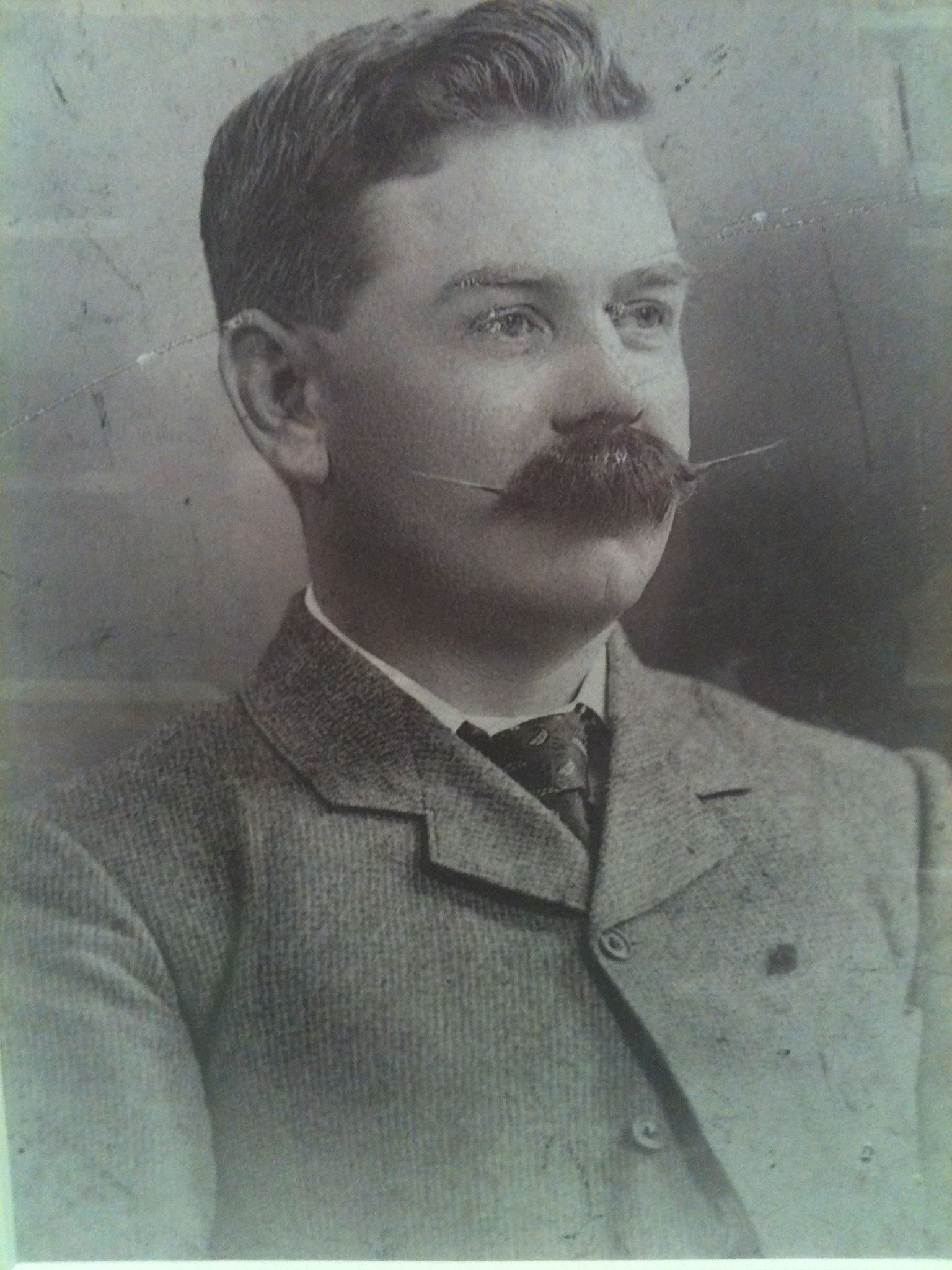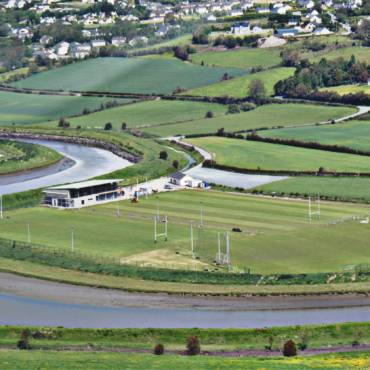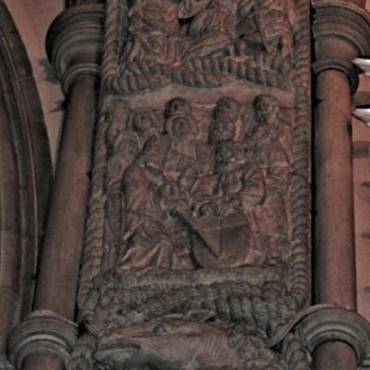A history of local government in Letterkenny
We know from state papers that the origin of the town of Letterkenny goes back to the Ulster Plantation with the land being granted to Captain Patrick Crawford on 20th September 1611. By 1625, we have our first account as to how Letterkenny was governed with control of the town under the sole management of Sir George Marbury, who apparently was quite a stern and authoritive figure. Robert Cartwright, the Donegal Provost Marshall, made a visit to the town at this time and in a letter dated 28th January 1625, he refers to Marbury as“a man of so evill government, and given to drinking as makes himself a laughing stock and scorne to the countreye” and that “willinglye he will not suffer neither sheriff nor any other officer to exercise any authoritye in that towne.”
It was only in the century after this that the governance of the town was moved away from one individual or family and split into two sections. The Grand Jury looked after County affairs while the various civil parishes of the Church of Ireland looked after more local affairs. The Grand Jury was typically a panel of local landlords with responsibility for civil government, the maintenance of roads and bridges and the provision of county hospitals for example. It did this by raising a local tax called the county cess, the calculation of which varied from county to county. For Donegal, the Grand Jury tended to consist of the local Ascendancy families such as the Boyds and the Chambers. The civil parishes of the Church, on the other hand, were responsible for poor relief, graveyards, education, sanitation and the enforcement of law and order, paid for through the collection of the tithe.
Since 1639, the town of Letterkenny was within the district of Manor Sempill and in the nineteenth century the care of various parts of the town was to be carried out by prominent townspeople assigned by the jury. One such set of assignments from 8th December 1821 were given by the Seneschal for Manor Sempill, Mr. Ralph Young:
“We appoint the following persons as conservators of the streets of Letterkenny: George Leechand James Foyfrom the Market House to the lower end of the street. John Hunterand William Fisherfrom the Market House to the upper end of the town. John O’Donnelland Alexander McCollumfor Castle Street etc. We appoint James Gallagheras town constable and allow twenty five pounds sterling as his salary, to be collected from the Manor.”
However, this system of local government was flawed on many levels. Small cliques, who were unrepresentative of the local townspeople, mostly ran these juries and as such, throughout the country they tended to be rife with corruption. A series of acts were introduced that brought about a change to this system beginning with the Lighting of Towns Act of 1828 which provided a framework under which an urban area could elect a body of Town Commissioners. However, only those with property worth £20 or more could serve as Town Commissioners and only those with property worth £5 or more could actually vote.
This act was further enhanced with The Towns Improvement (Ireland) Act of 1854 that reduced the property valuation for voting to £4 and the elected commissioners’ property valuation to £12. Through the implementation of both of these acts, Letterkenny, like so many other towns, received its first elected Town Commissioners in the mid nineteenth century who were responsible for street paving, cleaning and lighting and the control over the fairs and markets.
This new administration of Town Commissioners wasted no time in implementing improvements to the appearance of the town, erecting gas lighting for the Main Street in 1856 and establishing a new fair for the town.
In 1863, the Town Commissioners welcomed the visit to Letterkenny of the Lord Lieutenant General and General Governor of Ireland, George William Frederick Howard, Earl of Carlisle. Chairman of the Town Commissioners, John R. Boyd, addressed the Lord Lieutenant General in Hegarty’s Hotel at the Market Square on behalf of Letterkenny. Town Commissioners present were Edward Murray, Joseph Gallagher, William Elliot, Robert McMullan, William Hegarty, John Gallagher, Matthew Wilson, and Robert Henderson. Another recorded Town Commissioner at this time was Henley Thorpe while the Town Clerk was John Storey (a former Baptist pastor in the town and one of the founding members of the Christian Brethren, who built the Gospel hall on the Church Lane in 1895).
These Town Commissioners served the needs of Letterkenny for almost half a century but they were still being drawn from the landlord and propertied classes of the town. The big change came with the Local Government (Ireland) Act of 1898 which significantly removed the property qualifications for councilors to be elected, gradually facilitating the emergence of the ‘working-class councilor’, more representative of the people that could now elect them.
The election for the new Urban Council aroused much interest in the locality. This was at a time when Nationalism was rising to the fore and this was finally a chance for the Nationalist majority in the town to make a mark on their local governance. The Derry Journal tells us:
“There were sixteen candidates seeking the suffrages of the electors for the vacancies, nine of whom were Nationalists and six Unionists and an Independent, and the elections gave rise to considerable interest. The Nationalists of the town, though the vast majority of the inhabitants, have hitherto been deprived of that representation which their numbers and interest in the town entitled them to. They have never had a controlling voice in the government of Letterkenny, the Town Commissioners being with a couple or three exceptions, Unionist and Protestant.”
Prior to the election, the Unionists of Letterkenny were offered three seats on the Council, a number that was felt was representative of their numbers in the town at the time but the offer was rejected and all of the candidates went to the polls on Monday January 16th 1899. The returning officer was John G. Larkin with booths set up in the Literary Institute and in the ‘Old Seminary’ next door.
Edward McFadden topped the pole with Connell Bradley and Thomas Mulhern following closely and Patrick Doherty (of the Central Hotel), Bernard Langan, Philip Carroll, John Sweeney, James Gallagher and Francis Ward going into local history as the first elected Urban Council for Letterkenny in this new format. John G. Larkin was selected as the first Town Clerk. William. G. McKinney, William Boyd, Major Doyne, Robert McClure and James Corry were just some of the defeated candidates, although both McClure and McKinney would later become members of the council in 1909 and 1920 respectively. Other elected councilors in the first decade of the twentieth century include Patrick McAteer, Henry Gallagher, John Gallagher, Daniel McDevitt, James Gibbons, Thomas Sweeney, Patrick Doherty jnr., and John Ward.
From 1899, and up until its dissolution in 2014, 96 different councilors served on either the Urban or Town Council. However, female representation in local governance in the town was very poor in the 115 years of its existence as, from those 96 councillors, only five were women – Kate McCarry, Sally Blake, May McClintock, Jean Crossan and Lisa Culbert (although as the latter two were co-opted onto the Council, technically the people of Letterkenny only elected 3 women in the entire history of the Council). Leading the way for female representation on the Council was the hotel proprietress Kate McCarry, who was elected in June 1925, becoming the first woman to be elected. Also elected that year were William Boyle, Patrick O’Donnell, John Cullen, William Gallagher, Samuel Divel, William G. McKinney, J.P. Speer and Michael Moriarty. Kate McCarry served on the council for 3 years, serving as Vice-Chairman in her time, but it would take another 42 years for a female to be elected again, with Sally Blake being elected in 1967. Kate McCarry died in 1970 with her place in Letterkenny forever assured as the first elected woman to Letterkenny Urban District Council.
For many years, the council mostly met in the premises of John G. Larkin at 103 Main Street but also in various local hotels, such as Doherty’s and Hegarty’s. Between 1960 and 1979 the Council met in the former Maternity Hospital situated within the old Workhouse. The Urban Council moved into Murrac a Boo in 1979, formerly the Rectory of the Church of Ireland and before that, the private residence of Lancelot Eustace Smyth and his wife, Frances Elizabeth Rosalie Smyth. The Urban District Council, by now renamed Letterkenny Town Council, left Murrac a Boo and moved into a new, artistically designed Public Services Centre on the Neil T. Blaney Road in 2002. Designed by McGabhann Architects, the sloped roof is covered with grass in an attempt to blend in with the grassland visuals of the surrounding hillsides. The same architects also designed a new Regional Cultural Centre, coincidentally on the site of the now fired damaged and demolished Murrac a Boo.
And so it was in this Public Services Centre on the 12th May 2014 that the Letterkenny Town Council met for the final time, owing to the sweeping changes brought about by the government. Cllr. Dessie Larkin signed off this emotional final meeting with the quip “That’s all folks!” and the Council as we knew it were consigned to the history books.
